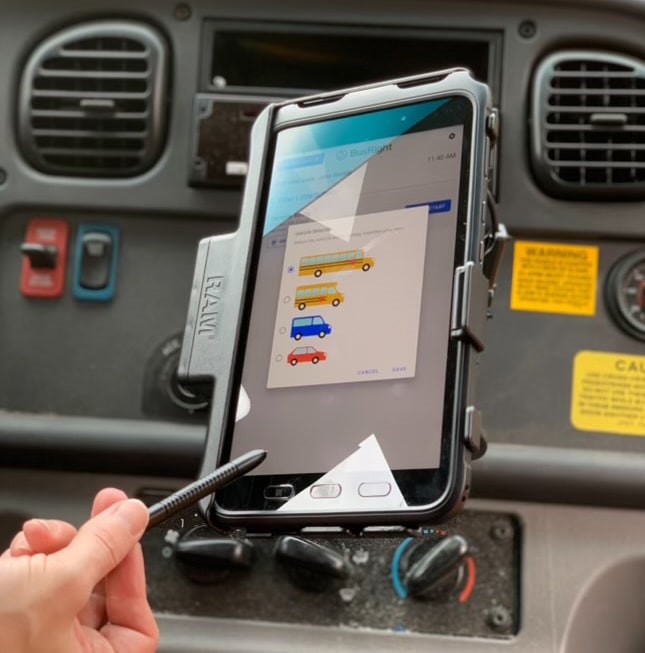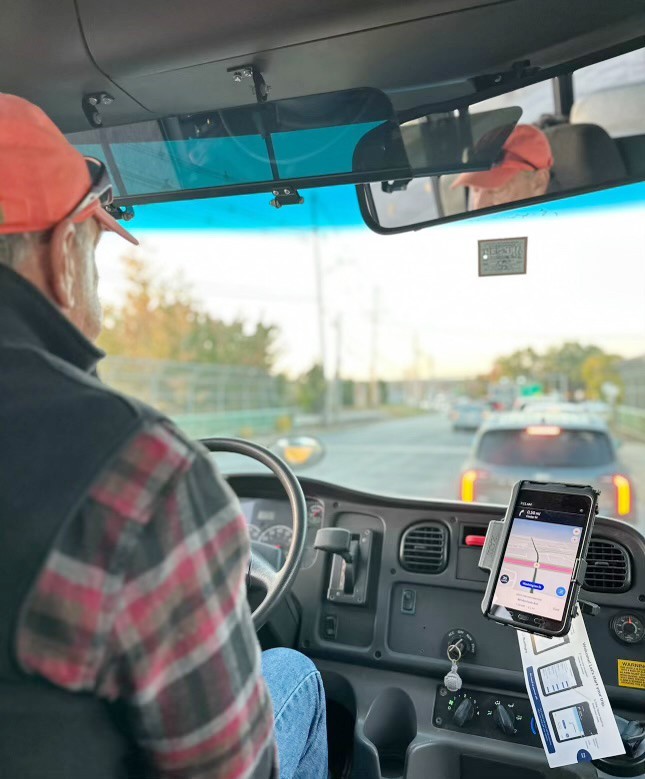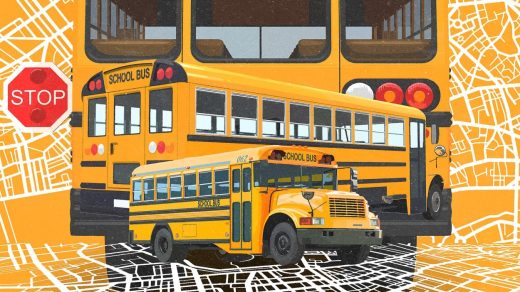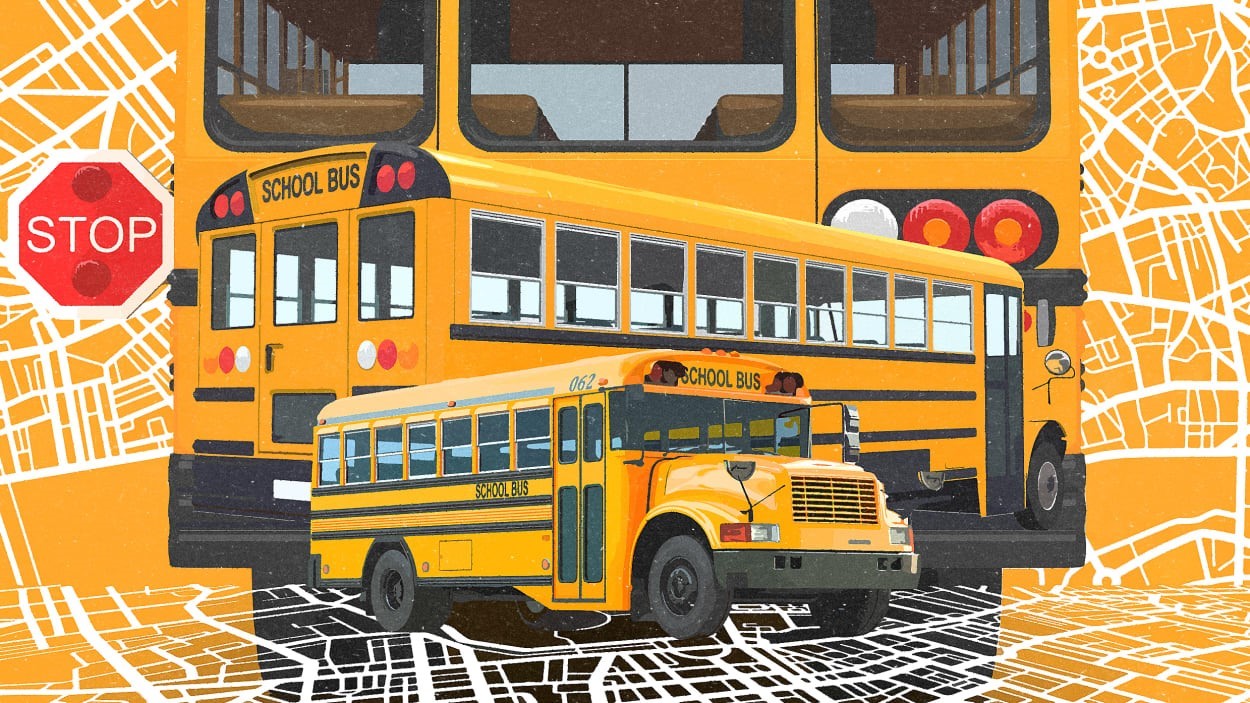A plan to save the yellow school bus
As transportation director at Kimberly School District in Kimberly, Idaho, Shonia Gaston knows a lot about work-arounds.
With 2,200 school children riding her buses across 17 square miles every day, Gaston manages change constantly: buses driving tough winter roads through Kimberly’s rural neighborhoods, regular transportation changes that come along with two-address households, driver sick days, and a steady stream of parent phone calls to her dispatcher (a job historically shared by one full-time and one part-time employee). For years, Gaston worked off of paper—any time she needed to make a change to one of her driver’s routes, she would print off a new four-page map.
“I started as a driver in 1984,” says Gaston. “We had hand-drawn maps.” In the past 40 years of working in school transportation, Gaston says, not much has changed. Most school systems rely on paper and a smattering of software products to manage their drivers, route changes, and parent communication. That can make for an incredibly complicated and frustrating set of logistics when changes inevitably pop up.
School buses represent our nation’s largest mass transportation system, covering 25 million students every day. In recent years, though, that system has been strained. The Economic Policy Institute reports that nationwide the number of employed school bus drivers has dropped below pre-pandemic levels, with roughly 15 percent fewer driving in K to 12 schools in September 2023 than in September 2019. Driver shortages have made recent headlines in New York, Pennsylvania, Kentucky, and California, as well as many other states. The result is delays, confused parents, and school transportation directors like Gaston scrambling to meet the needs of students and their families every day.

There has been little innovation in the space, until recently. Last fall, Gaston took a chance on a small tech company from Connecticut. BusRight makes software that allows school districts to manage all aspects of the school bus experience: safety, route mapping, and communication via a tablet on the bus and an app on parents’ phones. The relationship has completely changed Gaston’s job, shaving at least $8,000 from her budget and allowing her to retain drivers and leverage one part-time dispatcher instead of the 1.5 headcount she’d used previously. “BusRight helped us bring our chaos down,” says Gaston. “It’s the best thing we have ever done.”
Launched as a capstone project by then-students Keith Corso and Neil Bhammar at Northeastern University in 2021, BusRight, which builds and sells cloud-based software for school transportation offices, has gained tremendous momentum in the past three years. In July 2023, the company secured $7 million in series A funding in large part from Las Olas Venture Capital. With customers in 23 states, BusRight grew 700 percent in 2022 and saw revenue growth of 9x in 2023. “With BusRight you can build a route in under 60 seconds,” says Corso. “It can be sent to any tablet, to any vehicle in your fleet in one second. Any driver can then click a button and get turn-by-turn directions.”

Regardless of the size or location (rural or urban) of a district, the BusRight platform allows school transportation directors like Gaston to manage communication with parents and drivers, and address additional needs such as wheelchair access, schedule changes (split custody and foster care are two examples), and last-minute traffic patterns (construction and accidents). “Every night we ingest the CRM from the school and then visualize it for the school,” says Corso. “They need to build routes quickly, send them to tablets so students get on the right bus at the right time,” he says.
Giving transportation directors, drivers, and busing infrastructure a nimbler way of operating, says Corso, allows for a better experience all around: for parents, for drivers, for kids, for schools. “The form still works,” he says, noting the product came to fruition after countless hours of interviewing bus drivers, transportation directors, and parents. “It’s the function that needs a reboot. The infrastructure simply doesn’t fit.”
A few months into using the product, Dana Cruikshank, transportation director at Beverly Public Schools in Beverly, Massachusetts, realized he wasn’t able to locate buses on the platform unless they were in use. He asked Corso’s team if they could create a way for him to follow buses when they were parked in garages or being worked on by district mechanics. The BusRight team made some changes and accommodated the request.
Similarly, when a main water bridge in Beverly closed for what is estimated to last seven years, drivers were initially being routed over it, despite the closure. BusRight was able to override the routing and consistently provide drivers with an alternate route. For Gaston, BusRight has also translated into fewer stop sign violations, too. “I can send right to the judge, where the bus was, how fast it was moving, and how long it stopped,” she says. “When parents say they were flying down the road, I have proof they weren’t. I’m protecting safety all around.”
(17)



